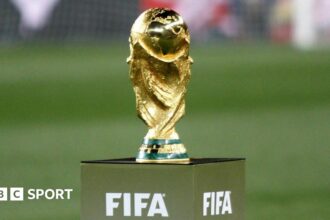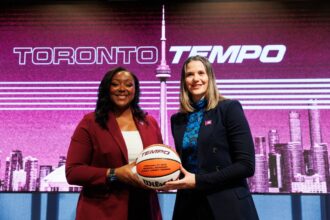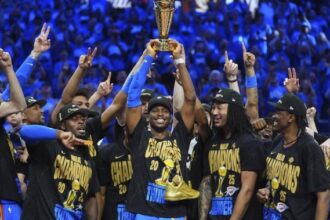The echoes of shock are still reverberating through Montreal’s hockey corridors after yesterday’s unexpected announcement. The Canadiens have acquired star defenseman Noah Dobson from the New York Islanders in what can only be described as a seismic shift in the team’s defensive strategy.
At just 24 years old, Dobson represents exactly the kind of blue-line talent the Habs have been desperately seeking—a right-shot defenseman with offensive upside who can quarterback the power play while providing reliable defensive coverage. The move signals a clear commitment from General Manager Kent Hughes to accelerate the team’s rebuilding timeline.
“This acquisition fundamentally changes our defensive corps,” said Hughes in the post-trade press conference. “Noah brings elite puck-moving abilities and the kind of two-way presence that’s increasingly rare in today’s NHL.“
The cost was substantial, though. Montreal parted with promising forward prospect Sean Farrell, defenseman Justin Barron, and their 2025 first-round draft pick—a package that reflects Dobson’s rising stock in the league. After posting career highs with 11 goals and 59 points last season while averaging over 24 minutes per game, his value has never been higher.
For Canadiens fans accustomed to the patient rebuild rhetoric, this trade represents a dramatic pivot. Rather than continuing to stockpile draft picks and prospects, management has opted to inject immediate high-end talent into the lineup. It’s a calculated gamble that suggests the front office believes their young core—including Cole Caufield, Nick Suzuki, and Juraj Slafkovsky—is ready for the next competitive step.
The Islanders, meanwhile, appear to be retooling rather than rebuilding. The acquisition of Farrell and Barron adds youth to an aging roster, while the first-round pick provides valuable future flexibility. For New York GM Lou Lamoriello, this represents a rare willingness to trade a homegrown talent entering his prime years.
What makes this trade particularly intriguing is how it reshapes Montreal’s defensive identity. For years, the Canadiens have struggled to find consistent offensive production from their blue line. Dobson instantly becomes their most dangerous threat from the back end, capable of driving play and creating scoring chances in ways the team has lacked since P.K. Subban’s departure.
The hockey analytics community has largely praised the move for Montreal. Dobson’s underlying metrics—particularly his controlled zone entries and exits—rank among the league’s elite defensemen. His ability to suppress opposing scoring chances while generating offense places him in the upper echelon of modern NHL defenders.
For a franchise that has historically prided itself on defensive excellence, from Doug Harvey to Larry Robinson to Andrei Markov, Dobson represents a return to that blue-line tradition. The Quebec native’s homecoming adds a compelling narrative layer to an already significant hockey transaction.
As training camp approaches, all eyes will be on how quickly Dobson integrates into Martin St. Louis’s system. His ability to form chemistry with fellow defenders Mike Matheson and Kaiden Guhle will be crucial to the team’s success this season. If the integration happens seamlessly, the Canadiens could surprise many by accelerating their competitive timeline.
The hockey landscape in Montreal has been fundamentally altered by this blockbuster deal. The question now becomes: is this the beginning of a new competitive era at the Bell Centre, or simply another chapter in a rebuild that continues to evolve? As the dust settles on this franchise-altering trade, one thing is certain—the expectations in hockey’s most passionate market have just been dramatically raised.
Follow more sports analysis and Montreal coverage at CO24 Culture and catch my latest opinions on hockey’s evolving landscape at CO24 Opinions.























